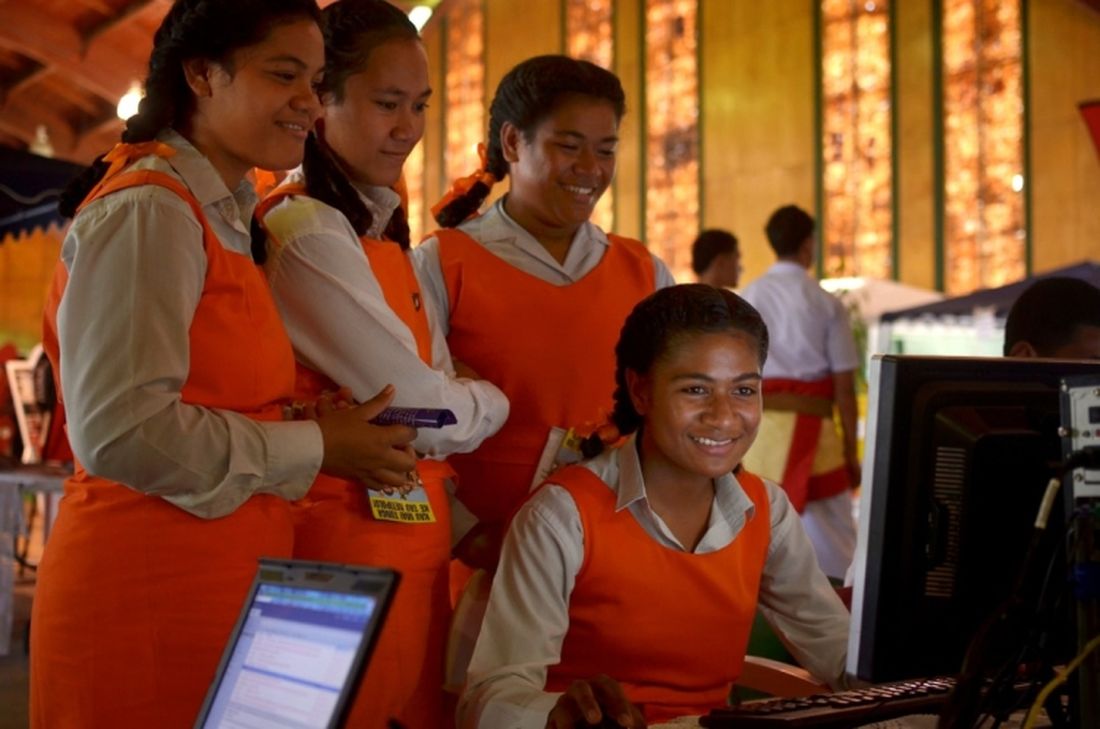Opening a global conversation about the gender digital divide

The COVID-19 pandemic showed how critical digital technologies are in today’s world — they kept businesses, education, government services, healthcare, and economies running despite the health crisis and global economic downturn.
But it also shed light on another issue — many people and communities have been left out of their country’s digital transformation. Why is this a problem? Because economic development has become more dependent on digital technologies. Those with limited or no access to technology are falling further and further behind.
In many developing countries, women and girls fall into this category. Barriers and constraints in accessing the internet impede their full participation in the social and economic life of their communities and countries. Today, we are seeing long-standing development gaps between men and women moving online. It is called the gender digital divide.
Digital transformation can’t achieve its potential when half of the world’s population is excluded or limited from the process, making it an important and relevant topic in development. Closing this divide is imperative for ensuring women and girls have better and more access to healthcare, education, jobs, and civic participation.
However, bridging the gender digital divide is complex — its causes are multifactorial, and the mix of factors changes across a woman’s lifetime. These include the legal and regulatory environment, the availability and accessibility of affordable internet, digital skills development, relevant content, online safety and security, and opportunities for education and employment in the ICT sector.
Cutting across all these factors are social and cultural norms and expectations concerning girls’ and women’s roles and their relationship to technology. For instance, cost concerns may limit the number and sophistication of smartphones used in a household. When the supply of phones or computers is limited, women’s and girls’ access is not prioritized. Affordability concerns can also impact internet availability for girls and women; lower-cost internet access plans are usually more restrictive in terms of service and are of lower quality. The poor user experience may decrease women’s interest—or appetite — in using the internet or seeing it as a valuable resource.
Security and privacy concerns also creep in, like online harassment and cyberstalking. These threats further discourage women from becoming active internet users. The ability to use digital technologies productively and safely requires digital literacy, skills, and confidence that may not be provided or encouraged for women and girls. Pursuing STEM education may be actively discouraged, narrowing the pipeline of potential female leaders, role models in technology fields, and gender-based innovation.
To find a definitive solution for addressing the gender digital divide, we need a comprehensive, systematic approach to define, measure, analyze and understand it. We need a system for systematically collecting data to establish a baseline and measure progress. We also need to educate decision-makers in government, businesses, and academia about the burdens the gender digital divide brings. Finally, we need to design and implement effective measures to address it.
This topic is close to our hearts. We feel that greater awareness and a global conversation is an essential step for tackling these issues. For that reason, we are launching a series of blogs that explore the challenges and opportunities faced in bridging the gender digital divide.
In our upcoming publications, we will try to answer the following questions:
• Can best practices for digital inclusion be identified across countries?
• Can these practices be implemented in other countries?
• How does digital inclusion affect outcomes for girls and women?
We look forward to sharing more research and ideas on how to close the global digital divide, and how to help make sure that everybody can take full advantage of the ongoing digital development revolution.
Original: https://blogs.worldbank.org/digital-development/opening-global-conversation-about-gender-digital-divide